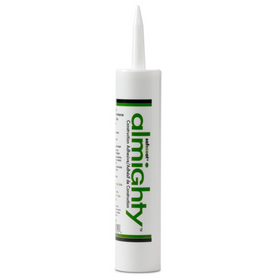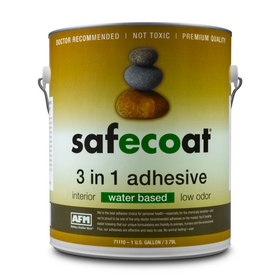
A Non-Profit Uses Compressed Earth Blocks to Build Happy Homes in Haiti
Last Updated: Mar 28, 2025In May 2021, Ryan Runge, owner of AECT (Advanced Earthen Construction Technologies) near San Antonio, Texas, received a phone call that intrigued him. One of the BP714 compressed earth block machines that his company had manufactured needed maintenance. The machine, which uses hand-operated levers to produce interlocking, holey CEBs (compressed-earth blocks), was in Haiti. Owned by the non-profit organization Welcome Home Haiti (WHH), which is in the northern part of the country a short distance from Cap-Haitien, local workers had used the machine to manufacture 100,000 blocks for 130 new homes.
Table of Contents
- Out of Tremendous Need, A Home
- CEB Blocks
- What Is Best The Best Soil Mix for Compressed Earth Blocks?

Runge headed down to Haiti and helped the workers in the CEB facility "perform some of the 100,000-block maintenance actions," he wrote on his blog. Runge also "got the machine running like a clock again, producing over 1,000 blocks per day!"
"The CEB plant is especially valuable because decent building materials are not readily available on the island," he wrote. "With their BP714 machine, WHH and crew [can] produce enough fireproof, hurricane-proof, and earthquake-proof CEBs to build a house every week."
Steve Hari, WHH's co-founder, and field director, first visited the area with his son Tyler in 1999 on a mission trip through their church. They quickly realized the need for decent housing. "The community's spiritual, medical, and educational needs were met," Hari says, as the church had helped fund and build worship areas, a health facility, and a school.

"But most families went home every night to structures made of sticks and mud—sometimes ten people crowded into a room the size of the master bath in our house in the States. The need for safe, secure, and sanitary housing was obvious."
In 2010, Hari helped establish the WHH ministry. The organization's goal was to build one home per year for a Haitian family. Instead, using CEB technology, WHH has been averaging one house a month since 2010. "Now, we're ready to do 50 a year," Hari added.

Out of Tremendous Need, A Home
According to the relief organization, the KORE Foundation, Haiti currently has 10 million people. Ninety-five percent are descendants of former African slaves brought to the country by the French to farm sugarcane. The literacy rate is about 52%; less than 30% of students reach 6th grade.
Almost 60% of Haitians live on less than $2 per day. While KORE writes that 29% of the population lives in extreme poverty, other sources estimate it to be 60 or even 80 percent. In 2009, multiple tropical storms and hurricanes escalated the country's food crisis and political chaos. The 2010 earthquake left 316,000 dead, 300,000 injured, and 1 million people homeless.

Over time, the Hari family came to know many Haitian families personally. The local church, however, nominates families for homes based on WHH's requirements. "We interview the families to make sure their need is legitimate," Hari explains. "Then, we put the family on our website for a group, church, or family in the United States to adopt. They raise money for the house."
Usually, those who funded the home's construction will travel to Haiti to finish the project with the family. Together, they might put on the roof, apply a concrete sealer to the walls, or build furniture. After, there's a party as the house is dedicated to and handed over to the Haitian family.

WHH constructed the first 50 WHH homes with traditional cement blocks, Hari says. "Then I realized how high unemployment is here. I began looking for another way to provide jobs. Through a Google search, I found Ryan's compressed earth-block machines." WHH bought the BP714 and began employing local men to make the compressed-earth blocks and construct the homes.
"Each house we build puts 100 Haitian men to work," Hari says. "So, we're also feeding 100 Haitian families, as the men make blocks every day."

The compressed-earth block homes all have three bedrooms with a family room and a covered porch. The project also includes an outbuilding with a toilet and shower. "There isn't any internal electricity and plumbing in the homes," Hari says. "But when the families are coming from mud huts with dirt floors, these homes really are life-changing."

Roudeline, her husband Weegtchen, and their two children are not only the happy recipients of a WHH compressed-block home; Weegtchen also works fabricating blocks for future houses. "The work is a strength in my life because before when I wanted to work, I had nothing," Weegtchen said in a WHH video. "I didn't have a vision or goals. Since Welcome Home Haiti, my life has changed."
Roudeline adds that "For me, this house means a lot. We didn't have anywhere to sleep before. I can't find the words to say [exactly what I mean], but the truth is I have a joy in my heart. We were suffering so much. We had a great need. Now, we're rejoicing in this house."

CEB Blocks
WHH conducted numerous tests to find the right combination of materials for the compressed-earth blocks. "The soil itself has to have the right amount of clay and silt," Hari says. "You can't use topsoil with organic matter. You have to get down to the clay."
"We did experiments to determine how much sand to add and how much cement for stabilizer," he continues.

What Is Best The Best Soil Mix for Compressed Earth Blocks?
The formula used by Welcome Home Haiti is 60% dirt, 30% sand, and 10% cement. "We did a lot of testing. The sand is like the bones, and the clay is like the muscle. You have to have the right balance in the block to make it the strongest. We made different batches to see which one was the strongest."
Building Materials
Shop high-performance building materials that are vetted for benefits to your health, your pocketbook, and the planet.

AFM Safecoat Almighty Adhesive Case of 12
AFM Safecoat
In Stock

AFM Safecoat 3 in 1 Adhesive
AFM Safecoat
In Stock

Quickscrews Cabinet Install Screws
Quickscrews
In Stock

AFM Safecoat Metalcoat Primer
AFM Safecoat
In Stock

AutoSlide Automatic Sliding Door System
Autoslide
Out of Stock
2 Colors

Autoslide Smart Tag Pet Door Kit
Autoslide
Out of Stock
2 Colors

AutoSlide Elite iLock Smart Tag Pet Door System
Autoslide
Out of Stock
2 Colors

Quickscrews Pan Head Pocket Hole Screws
Quickscrews
In Stock

Autoslide Elite Smart Tag Pet Door Kit
Autoslide
Out of Stock
2 Colors

Autoslide Motion Activated Pet Door System
Autoslide
Out of Stock
2 Colors

The homes have wood shutters and doors made by local craftspeople. "We buy from local businesses as much as we can," Hari says. Some of the homes have vinyl windows made by a small business in a nearby town.
For Roudeline and Weegtchen, moving into a WHH home has escalated their family's quality of life. "I'm working, and when I get home, my wife and kids are happy," Weegtchen says. "My wife has hope because she knows I'm doing something good. And that is a big change in my life."
"There are so many people who have this same need," he adds. "This is such a good thing. We say 'Thank you, thank you, thank you.'"
Camille LeFevre
Camille LeFevre is an architecture and design writer based in the Twin Cities.
